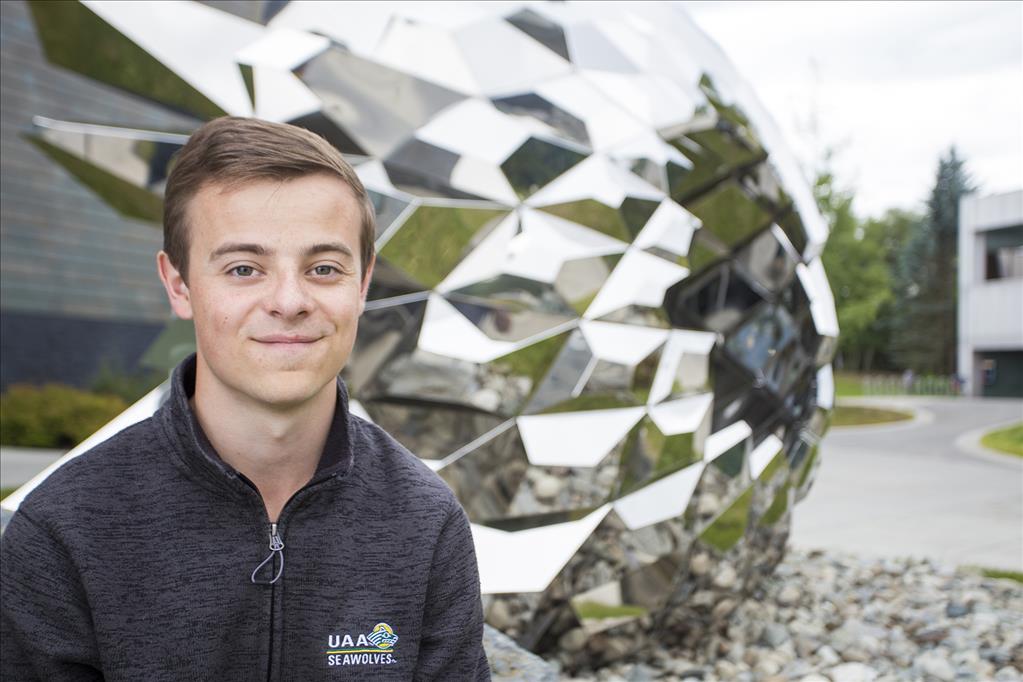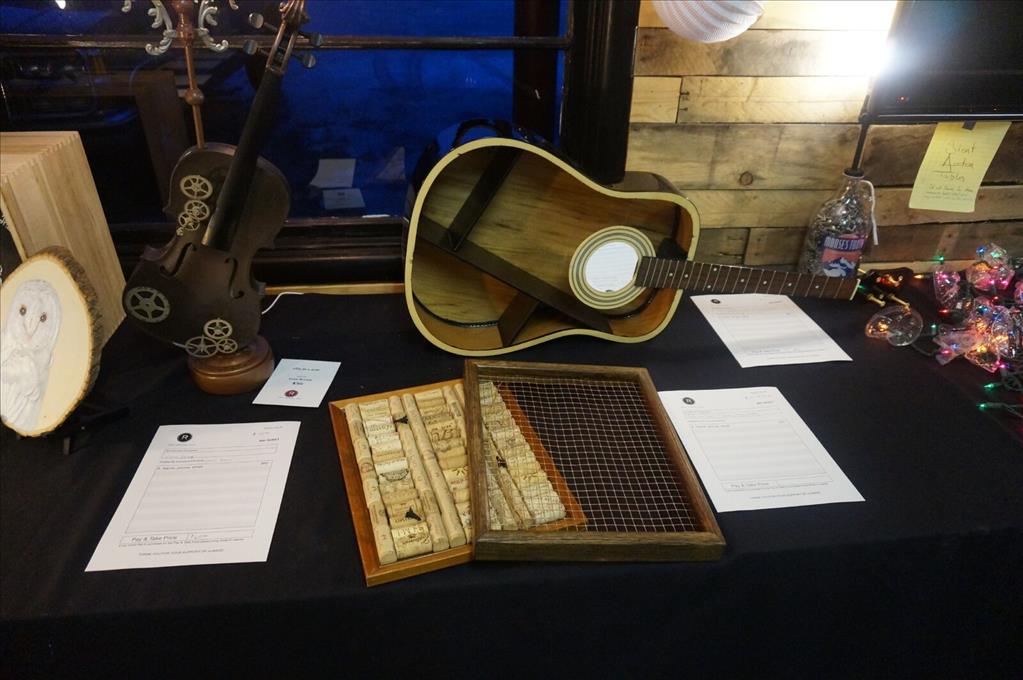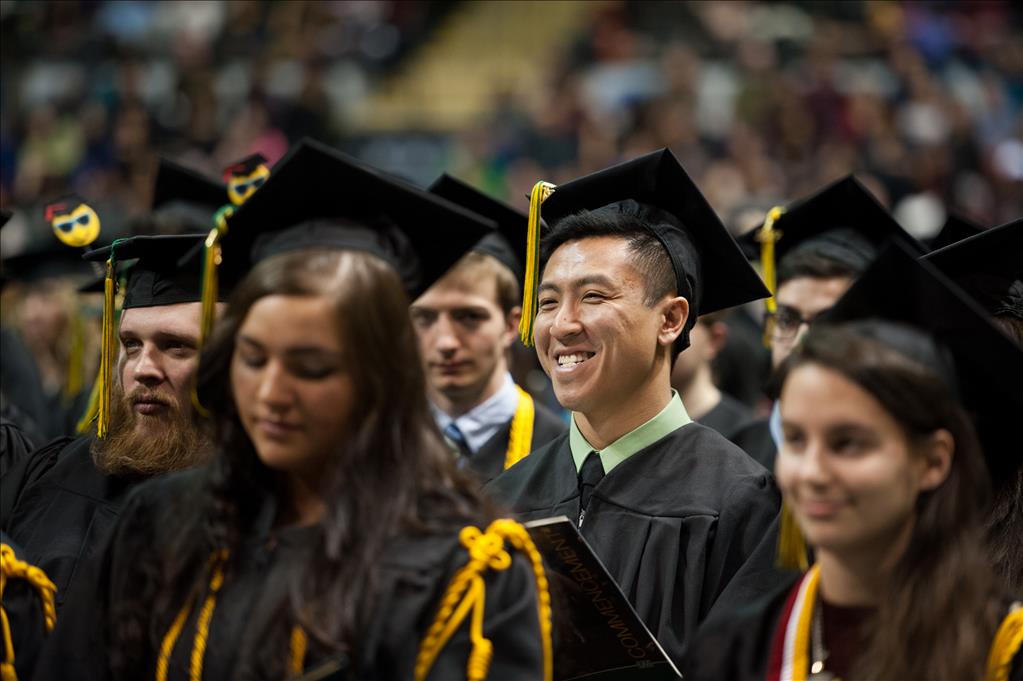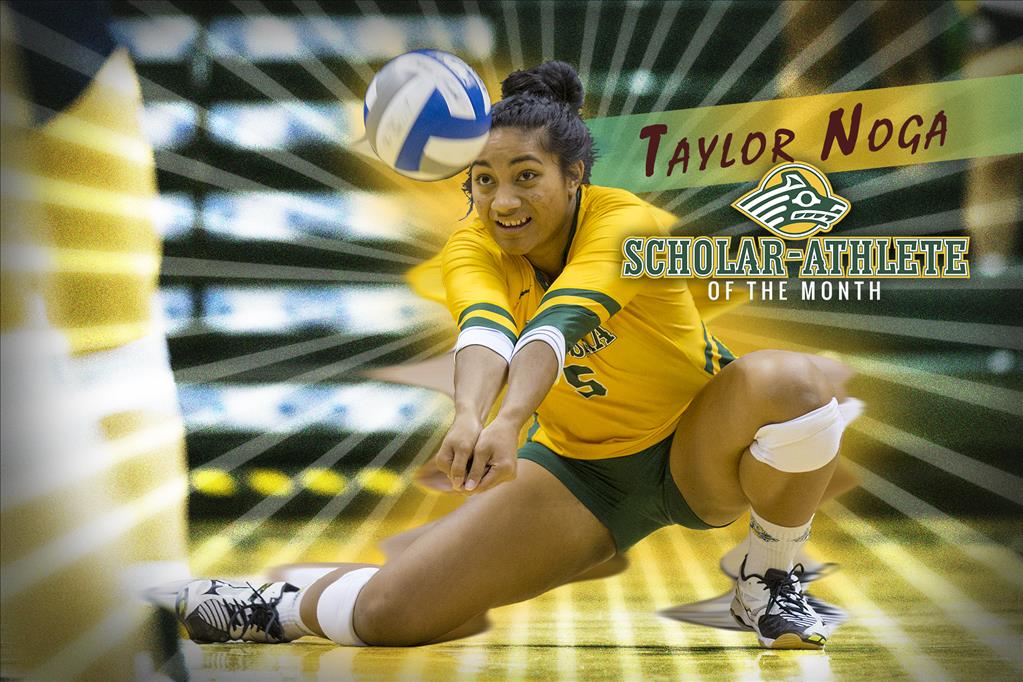Mapworks helps remove barriers to student success
by Tracy Kalytiak |
Cheyenne Mathews grew up in the picturesque Southeast Alaska community of Ketchikan, a place where people take a five-minute ferry ride from one island (Revillagigedo) to another (Gravina) to reach the airport, where hemlock and massive spruce adorn the mossy landscape, where every face in town and at school was a familiar one.
Last summer, Cheyenne moved into a UAA residence hall and launched her college career. At first, it wasn't easy: "I think people forget how diverse geographically Alaska is," she said. "I talked nonstop about how different Anchorage was, until it became a constantly recurring theme."
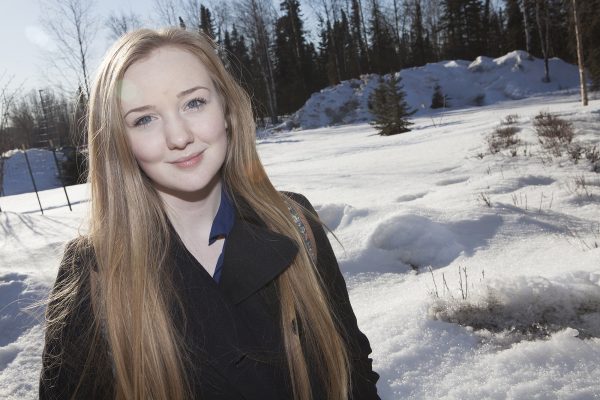
Cheyenne Mathews (Photo by Philip Hall / University of Alaska Anchorage)
Cheyenne — a UA Scholar — dove into campus life. The journalism and communication major enrolled in classes, joined Alpha Sigma Alpha sorority and Seawolf Debate, scored the assistant features editor position at The Northern Light, and began training as a KRUA-FM volunteer.
Along the way, she took a Mapworks survey because it gave her a chance to win an iPad.
"One of the reasons I knew about it was because one lady came into a lot of my general requirement 101 classes and gave talks about how taking that survey would actually benefit you," Cheyenne said, "because they'll give you feedback on what your areas of improvement should be. If you have big glaring errors in your academic progress, they'll connect you with resources."
'We know our students struggle'
Mapworks is a transition program that, last fall, focused on first-year UAA freshmen, with the goal of using detailed survey data to tease out and address problems that could derail their education.
"We survey them four times a year," said Molly Orheim, UAA's director of career services, who previously served as student retention and Mapworks coordinator. "We ask them 200 questions steeped in retention theory — such as, are you studying, are you sleeping, are you working. The program tells me which of our students are struggling based on how they answer, gives risk indicators, helps us reach out to the students who are struggling most."
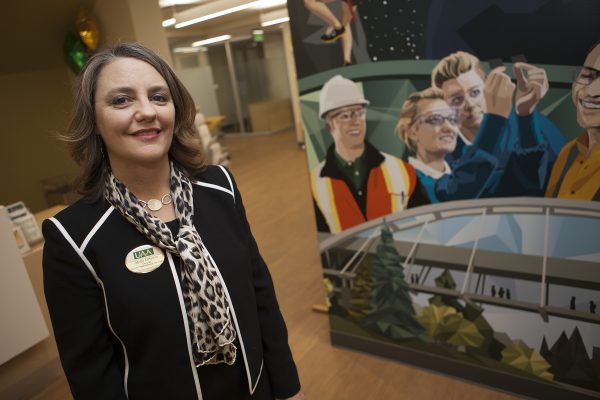
Molly Orheim is director of UAA Career Services. (Photo by Philip Hall / University of Alaska Anchorage)
A key survey question: Which faculty helped you become successful?
"That's an important piece of retention that's often overlooked," Orheim said.
It's so important that Mapworks hosts a faculty appreciation reception every year to recognize people at UAA that students most appreciate - the people who offer strategies for coping in a new, unfamiliar city and campus, who engage by brightening classes with humor, who become friendly faces and potential mentors.
"That (survey) information is valuable to the university," Orheim said. "We know our students struggle with finding community, academic behaviors, homesickness. We just saw a rise in homesickness in the last three years, so we started doing homesickness programming in the residence halls. Making programmatic changes breaks down some of those barriers."
Deans in colleges have access to aggregated survey data as well: "What are the College of Education students struggling with?" Orheim said. "It might be different than students in the residence halls."
Faculty and staff who do more
This year, a perennial high-ranking nominee, Vara Allen-Jones, captured the top spot on Mapworks list of UAA's top student-ranked faculty after earning 30 "unique student" nominations. Allen-Jones, an assistant professor in CTC's Learning Commons, teaches Guidance 150, a class designed to help incoming students successfully transition to college from high school, home or the workplace.
The others in the top four are faculty associated with CTC's College Preparatory & Developmental Studies Department:
- Don Rearden, an author and writing professor, received 18 nominations.
- English writing instructors Sarah Kirk and Patricia Grega each received 17 nominations.
Instructors with 15 nominations were Carey Brown, College of Health academic advising coordinator at the Learning Commons, who teaches Guidance 150 (and also directs COH's Junior Health Professions Academy for Clark Middle School students), and Choron Ryan, an anatomy and physiology professor who received the top spot on last year's Mapworks list of best student-nominated faculty members.
A valuable resource
Cheyenne said the Mapworks survey she took back in September asked rather general questions.
"Like, do you attend class," she said, "and on a scale from 1 to 10, do you ever skip classes, 1 being very often and 10 being not very often; do you feel like any of your classes are too hard to manage; do you feel like your struggling in any of your classes; do you feel like you belong at UAA."
"I thought those questions were really interesting," she said, "because I do live on campus and I'm not from Anchorage, so those questions are really important to my target group — the group that wouldn't feel like they belong because they're not part of the Anchorage community yet."
Campus activities and a strong academic background provided Cheyenne with firm footing in her first months at UAA, so she did not require much in the way of resources and help.
"But I do think it can be a pretty valuable resource for the students who do conduct it and who do actually need some of the resources they offer," she said. "It's nice just knowing there's someone out there who's specifically targeting your class because they know your class is the weakest link, most likely to not continue on with their academic progress. I think that's beneficial."
Written by Tracy Kalytiak, University of Alaska Anchorage
 "Mapworks helps remove barriers to student success" is licensed under a Creative Commons Attribution-NonCommercial 4.0 International License.
"Mapworks helps remove barriers to student success" is licensed under a Creative Commons Attribution-NonCommercial 4.0 International License.










